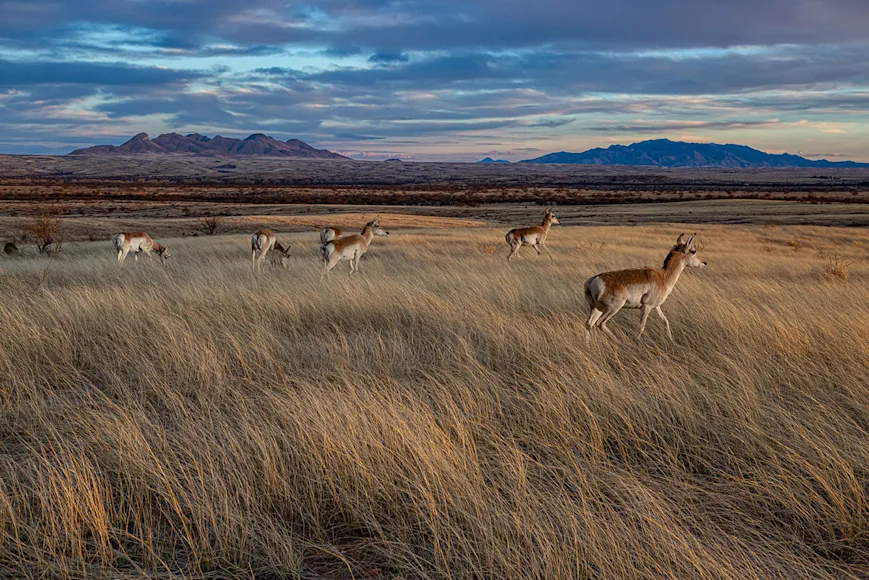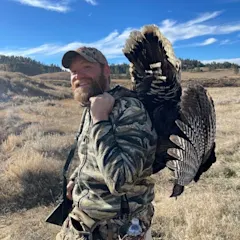Late last week, the Bureau of Land Management (BLM) announced plans to discard a set of policy-making tools that put wildlife conservation on par with drilling, mining, and grazing on hundreds of millions of acres of public land in the Western United States. When it was rolled out in April 2024, the so-called Conservation and Landscape Health Rule—or Public Lands Rule—garnered widespread support from conservation groups who said it would have protected hunting and fishing habitat and opportunity on BLM-managed lands.
In a press release issued this time last year, the Theodore Roosevelt Conservation Partnership (TRCP) applauded the incoming rule change and celebrated the hunting community’s involvement in the rule-making process. “BLM public lands and habitats are under increased pressure from drought, severe wildfires, and invasive species, and the Conservation and Landscape Health Rule will help improve the agency’s ability to address those challenges for the benefit of hunters and anglers,” said Joel Webster, TRCP's Chief Conservation Officer, in the press release, adding that: “TRCP appreciates the BLM listening to feedback and making refinements to the final rule.”
The BLM, housed under the Department of the Interior, manages approximately 245 million acres throughout the West. While those lands have often been prioritized for natural resource extraction and grazing, conservationists have long sought to enshrine hunting and angling as “multiple uses” that the BLM is legally obligated to consider when making management decisions. And many argued that the now-scrapped Public Lands Rule would have provided that mandate.
Aaron Kindle, Director of Sporting Advocacy at the National Wildlife Federation, said the rule was a net win for hunters and anglers. “The majority of America’s mule deer and elk winter range is on BLM,” Kindle told Field & Stream. “This rule would have been critical for those species, for sage grouse, and for some 3,000 other wildlife species that inhabit BLM lands.”
The rule would have created a framework for protecting “intact and highly functional” landscapes, not just for elk and mule deer, but for fisheries, pronghorn antelope, and upland birds, Kindle says. It also would have established a “restoration lease program," enabling boots-on-the-grounds conservation organizations—like the Mule Deer Foundation and the Rocky Mountain Elk Foundation—to lease certain BLM lands for habitat restoration work.
Though heralded by many hunters and anglers, the Conservation and Landscape Health Rule was not without controversy. Some environmental groups, like the Center for Biological Diversity, lobbied for more Endangered Species Act protections in the final rule. Others in the ranching and energy extraction communities condemned the rule outright, calling it federal overreach and a “capitulation to environmental extremists.”
Controversy aside, the finalized rule was a product of public input and meaningful compromise, according to Backcountry Hunters and Anglers (BHA) Policy Director Kaden McArthur. And one in which hunters and anglers had a prominent seat at the table. “Comments from our members and thousands of others who hunt and fish were incorporated into the final draft of the rule,” McArthur told F&S. “And it's our understanding that the Trump Administration is not intending to move forward with any public comment on the complete rescission of the rule.”
The rule change comes amid mounting threats to federally managed public lands in the West and across the country. Since Valentines Day, thousands of public land employees at the US Fish & Wildlife Service, the US Forest Service, the BLM, the National Park Service, and other agencies have lost jobs during widespread layoffs, leaving agencies understaffed ahead of summer tourist seasons. Earlier this month, members of Congress proposed selling off federal lands as a way to make ends meet during an upcoming budget reconciliation vote. Those sell-offs could include BLM and Forest Service lands.
Read Next: DOGE Cuts Could Threaten USFWS Annual Waterfowl Survey
Kindle said those threats run counter to the public’s desire to keep federal lands in public hands—and to protect them for future generations of Americans. “Every time we've done polling, people consistently say they want healthy, productive, clean public lands—and they want access to them,” he said. “What's more indicative of freedom than having 640 million acres of public land, most of which you can hunt, fish, camp, and hike on. These lands are a symbol of American freedom.”


